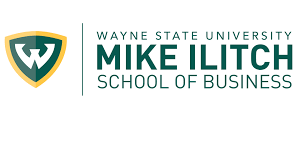Applying Inbound Technology In The Real World
Hello! My name is Grant Wedgwood. I am a student at Wayne State University and I am going to be talking about applying inbound technology technology in the real world and speaking to some experience that I've had and how you can find opportunities to augment the learnings you've had in the classroom and apply them to the real world.
Learning in a real world experience can benefit you.
Oftentimes we're we're learning a lot in classrooms and and trying to figure out how that even makes sense in the real world and we're trying to use our imaginations in ways that help us retain that information and what i've found in my personal experience and I know many of you can relate is finding a real world project can immensely extend your understanding of a topic and provide many other benefits i'll be going through my personal experience with that but teachthought.com article that i've read through and I provided the link here agrees that real world learning is a different type of learning that we can experience than what we can experience in a classroom which gives us a different lens to look at things and helps us to retain things through an actual project finding your real world opportunity my suggestions in that is look for a local professional organizations in your career field or look for non-profits that support causes that are in of interest to you.
I find that non-profits or professional organizations are oftentimes filled with do-gooders and people that are really trying to make an impact and are very welcoming to new ideas and they also for some reason typically have some kind of technology gap where people with some kind of experience with inbound technology say for example social media platforms email marketing website development anything like that very basic knowledge and understanding of that can go very far in these in these organizations and for example Yale insight says do non-profit offered the question do do non-profits take advantage of of digital world seriously according to net changes long running survey of technology used by nonprofits only 11 percent view their organization approaches to digital as highly effective so that's a pretty low number there and that would indicate that there is opportunity there i'm not saying that they'll be paid in most cases or in all cases but there there's still something you can put on your resume or just try to contribute to a good cause that you have interest in.
So I try to put together a list of how do I evaluate the opportunity is ripe so you can you can kind of look at all these organizations and figure out where you would like to you know maybe give an impact somewhere but you you got to assess whether that they even need your help so I kind of put together this list so does the organization organization use inferior technologies and means of communication that's going to be pretty obvious if you go to their website or go to their social medias how how
how they're doing to the next point does the organization have viable social media presence are they posting frequently are they getting a lot of engagement that could that could show that there's opportunity does the organization use an email marketing tool if you if you can't figure out how to subscribe to their email marketing tool they probably don't have one so you might check their website or just ask them does the organization have metrics to track their inbound technology performance now that that's going to be a little bit once you start engaging with them you'll be able to figure out some of those things do the members of the organization have aptitude or appetite for current technology again once you pursue them you'll probably get a better feel for these types of things but again figuring out if there's a good opportunity for you to apply what you've learned or gain a better understanding of inbound technologies through real world experience identify you know these key things and that might help you in that accept or reject process change management.
So I wanted to put this little blurb blurb in there because I felt you know you you we often want to jump in both feet in and and go crazy and do a bunch of stuff for these organizations but depending on where you're coming from there could be members and and the the leaders of whatever if it's a chapter or whatever that have been there for a while and have a lot of knowledge so make sure that you know your role and that you you you come in and you're humble you speak to what you know and acknowledge that you're not the subject matter expert create a need if if people don't necessarily see what being digital or having inbound technology see that is important then you know try to articulate that in the best way possible without being too too pushy be be forthcoming with your plans provide good communication slides visuals everything to help be transparent and just exude confidence and let them know that you're you're the right person for the job and you know and that's one of the benefits of going with a non-profit is that it's not as competitive and and especially if you're not getting paid then it just opens the opportunity for you to learn and for them to just have benefit and if you want more info on change management indeed had a pretty good article that I looked through on kind of how to deal with situations and make make a make a splash stepping on anybody's toes.
So how to make an impact understand the organization's goals and desired outcomes this is very important this is kind of what we learned throughout the course setting goals and targets that's going to be important because you want to be able to drive the result with whatever tool you use you might find that a tool is very cool or you think it could be applicable but if you're not placing it if it's not able to drive the outcomes that the the organization wants then it's probably not the best one to pursue establish your social media presence that's a pretty obvious one that's usually the low-hanging fruit set up a blog and publish content that one's a little bit more difficult excuse me you might need some some guest authors if you're not the subject matter expert but don't don't be afraid to just get some content out there I think in today's world content is king and getting things published quantity over quality is often be be seen not heard now that's that's that's my personal opinion I know that the some of the course coursework didn't didn't say that but when you're in this overwhelmed by information world I think yeah a lot of these a lot of these organizations are just sending emails and and here's our next event or here's our next class or whatever and if you just create other content that's not always selling stuff I think there's a lot of benefit to that especially through blogs set up an email marketing tool i'll give you an example the organization that I had helped prior to taking this class and i'll get into that more more details later they were getting they were using a tool that was basically just sending out blind carbon copy to over like a thousand contacts and they were getting responses that were saying take me off this email list or i'm going to report you to the authorities and they had probably been responding like that for some while and they don't know how they got on that list so being being using an email marketing tool helps automate some of that curating your contacts and can help manage efficiently the communications for for mass emailing and then track and communicate results and i'll give you some examples of how i've done that so my personal example here is APICS greater Detroit.
I was working in that area and I got involved in this organization because I was in supply chain and apex is a supply chain oriented organization and they were kind of they had a tech technology presence but I kind of just stumbled into it and then was assigned this vp of communications role but I was able to kind of sink my teeth in and do a lot of different things and they just kind of gave me free reign and that was another benefit of like a non-profit or a professional organization is that they just let let doers do and then I was able to learn a ton through this process so some examples of what I did was developed a new website through google sites which is they already had the google platform so I just was able to use that tool and figure out how to link the domain and do all that fun stuff and get that out there which is pretty simple and nowadays very low to no coding I use google analytics and google search console to kind of report and track my results and kind of our efforts that we had we launched an e-commerce site using Shopify which that allowed us to apex sells classes to members that they can take and get professional certification so we were able to post those classes so people could register and pay for those classes online which is way more efficient than people mailing checks and things like that we launch an email marketing program we use the tool Mailchimp it was a free a free under a certain amount of contacts and a certain amount of emails and then we created through that we created sign up forms automatic segmentation based on emails and clicks and opens so that was a pretty powerful tool compared to I think they were using google groups before and then just blind carbon copying a thousand people so that was that was a pretty powerful tool that they were pretty excited about and we pushed almost daily content through their social medias and i'll show you the impact here
in a second so these are some when I got involved in 2017 as the VP of communications for this organization I came in and not re I didn't take this class I didn't really know exactly what I was doing I was just kind of doing some research on my own and I kind of put together some slides and here's some examples of what I showed them as my plan to communicate what my intentions were and and get buy-in from them so on the left here you see target audience desired action so this is kind of like the buyer personas where you know it's not as detailed but just kind of articulating what we want what audiences we're trying to gear messaging towards so we have people who attend events we have people who want to become a member or people we want to get that we want to get certified or two of the three or three of the three so those are kind of the desired actions that we could simplify or boil it down to and then I laid out the communications landscape which I kind of put our website as the hub of everything which then would feed out to social media and Mailchimp which would drive all our email campaigns.
So and then our social medias were linked in twitter facebook and then our emails we segmented those out into our milk run emails and then our milk run emails were like our weekly or monthly emails communicating when our events were and when our classes were just kind of our email blasts and then our one-off emails were kind of like our blog posts or other content that we want to get out that weren't necessarily selling or reminding people of something just general content so these two slides were very impactful on how they were able to interpret what what I wanted to do and how it makes and and kind of make it make sense for the organization and just just some examples here of what kind of impact I saw from 2000 when I started in you know august 2017 to now her social media presence grew from a 114 to 921 and funny story on LinkedIn and twitter no one even knew the logins and I had to figure that out and that was kind of a nightmare and and doing the you know forgot my password thing and figuring out who was the the chapter president five years ago or whatever so that was kind of a you know a fun thing but the tremendous growth on LinkedIn which was really our target audience as a business professional network then we had facebook and twitter which we we saw you know double the followers but really LinkedIn was really where we focused our efforts and the results really showed so google analytics web traffic you can see we rolled out that new website and you know constant posting to our blog out there which we used google to kind of retrofit a blog in there and keeping that content current and then keeping it updated with our courses and everything has helped drive our web traffic up and then our google search console so there was some some bugs with the google sites that we ran into and figured out that after a while with the domain and and the mappings of that which you know the technical stuff is what gets a little hairy but you know you can work through it and and just like I did and not having much experience with it but yeah lots of figuring that out but that has kind of proven to be very beneficial and we're getting a lot of impressions and clicks through google search which wasn't really getting giving us much leads before at all so so that's that's my example and like I said I kind of fell into it and I just want to give my personal account as to how I really was able to drive home a lot of this knowledge that the this inbound technology course I wish I would have had that experience after the course and then I could really put some knowledge towards it but even without having that much background in inbound technology I was able to make a big splash and i've got a lot of good contacts it was a good resume builder for me and yeah I couldn't be more happy with that experience so hopefully this presentation helped you and I appreciate your time.
Thank you!


 Grant Wedgwood
Grant Wedgwood